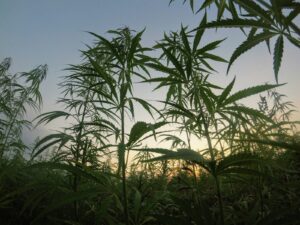As Earth Day approaches, is growing cannabis good for the planet – it is a bit of a mixed bag
As Earth Day approaches, everyone is evaluating what is good for the planet. Plastic, emissions, fake fur, and Temu’s fast fashion are clearly bad for the planet, but others are more nuanced. Ever since Morton Hilbert started the movement, it has been a time reflect, reassess and hopefully adjust. With marijuana and CBD have become mainstream and popular over the last few years, is cannabis for the planet?
While cannabis has clear medical benefits and is considering a treat recreationally, it can take a toil on the earth. There are some benefits. As a fast-growing plant, cannabis can absorb significant amounts of carbon dioxide from the atmosphere, making it a potentially valuable crop for combating climate change.
RELATED: Science Explains How Marijuana Inspires Awe
The plant’s deep roots also help prevent soil erosion, and its flowers attract pollinators like bees, supporting biodiversity. Additionally, cannabis has been shown to be effective at phytoremediation – absorbing and storing heavy metals from contaminated soils, which can help clean up polluted land. These are all related to outdoor grows.

The downside can have environmental risks which need to be managed. Both indoor and outdoor cannabis grows can be highly water-intensive, with estimates of up to 6 gallons of water per plant per day for cultivation. This water usage can deplete local water resources and pollute waterways with fertilizers and pesticides. While less than crops like citrus fruits, grapes (wine), palmists, apricots, it is still a significant impact.
Indoor grows also have a large energy footprint, with high electricity demands for lighting, HVAC, and other equipment, leading to significant greenhouse gas emissions. Cannabis farming can also contribute to deforestation and soil erosion if not done sustainably, such as by clearing land on steep slopes. And the plants themselves emit volatile organic compounds that can negatively impact local air quality.
RELATED: The Most Popular Marijuana Flavors
Overall, the environmental impact of cannabis cultivation depends greatly on the specific growing methods used. Outdoor, soil-based cultivation with efficient water use and integrated pest management practices can minimize the environmental toll. Indoor grows, on the other hand, require more careful planning to reduce energy use, water consumption, and air pollution.
With the right policies and farming techniques, cannabis could potentially be grown in an environmentally-friendly way which sequesters carbon, supports biodiversity, and remediates contaminated soils. But the industry will need to prioritize sustainability to fully realize the plant’s potential as an eco-friendly crop. Legalization will have a big impact. Southern and other farming states with experience in outdoor growing will help. Thoughtful regulation, life cycle assessments, and adoption of precision agriculture technologies will all be important to making cannabis cultivation more sustainable.


